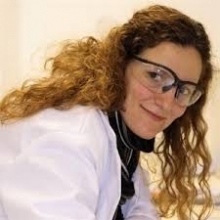Barbara Cortese

University position
RicercatoreInterests
Biographical sketch
Barbara Cortese graduated in Material Engineering from the University of Salento, Italy in December 2005, and receveid a PhD in "Nanoscience" on July 2009 at the University of Salento (Italy) discussing the thesis " Smart surfaces for cell adhesion control " supervision Prof. Giuseppe Gigli. During the PhD course she spent one year at the Center for Cell Engineering of Glasgow University, working in the group of Prof. Mathis Riehle. From 2009-2011 she worked as a researcher in Southampton where her work was mainly focused on microfabrication of microfluidic devices for pure RNA extraction using rapid prototyping methods (such as micromilling) and hot embossing with innovative plastic materials such as cyclic olefin polymers and copolymers (COC, COP). In October 2011 she worked on superhydrophobic/oleophilic coatings for oil water separation and superhydrophobic coatings, in particular diamond like carbon coated textiles in the CNR-ISMN (Rome). At present, she is a researcher at the CNR- Nanotec working as a PI on a My First Grant (MFAG) AIRC on the mechanotactic response of glioma cells to substrates of different rigidity. Her research interest includes timelapse imaging, morphology and calcium imaging as well as applying electrotactic cues for the control of cell movement. She works also in collaboration with the group of Neuroscience directed by Prof. Davide Ragozzino and Prof. Silvia Di Angelantonio.
Research interests
The over-arching goal of my research is to understand how cells interact with microenvironment particularly with mechanical and topographical cues. Particular areas of interest include superoleophilic, superhydrophobic/hydrophilic surfaces, special wettability, membranes, bio-inspired functional materials, identifying critical mechanical and electrical cues for controlling adhesion and mobility of cell culture; developing a substrates that mechanically and topographically mimics cell interactions, customizable high-aspect-ratio micro/nanostructures, and other smart surfaces; mechanically active and/or textured anti-biofouling surfaces; rapid application and scaling up of nanostructured surfaces. The approaches my lab employs are very multidisciplinary including microfluidics, biomaterials, quantitative imaging, and cell culture.
